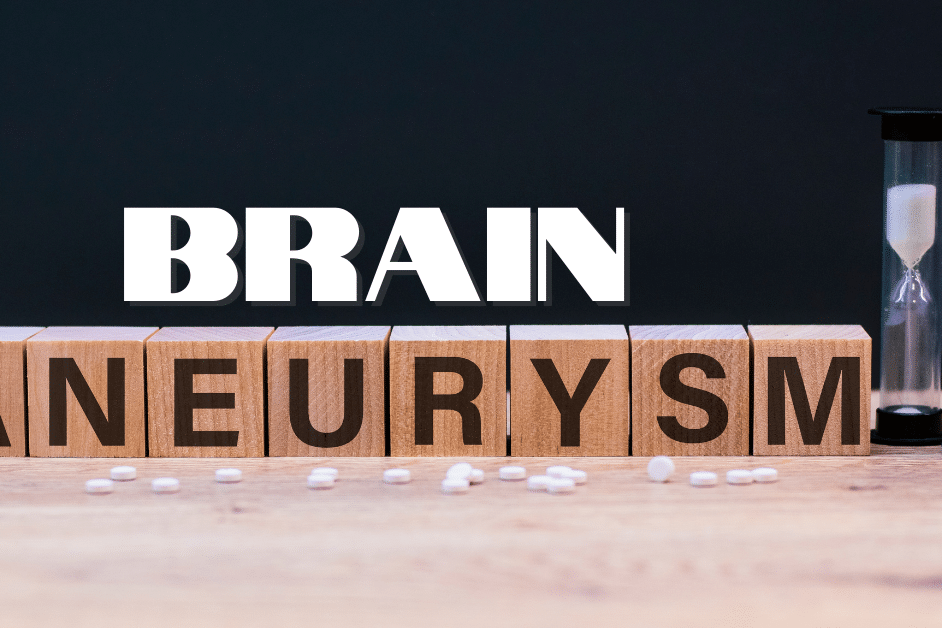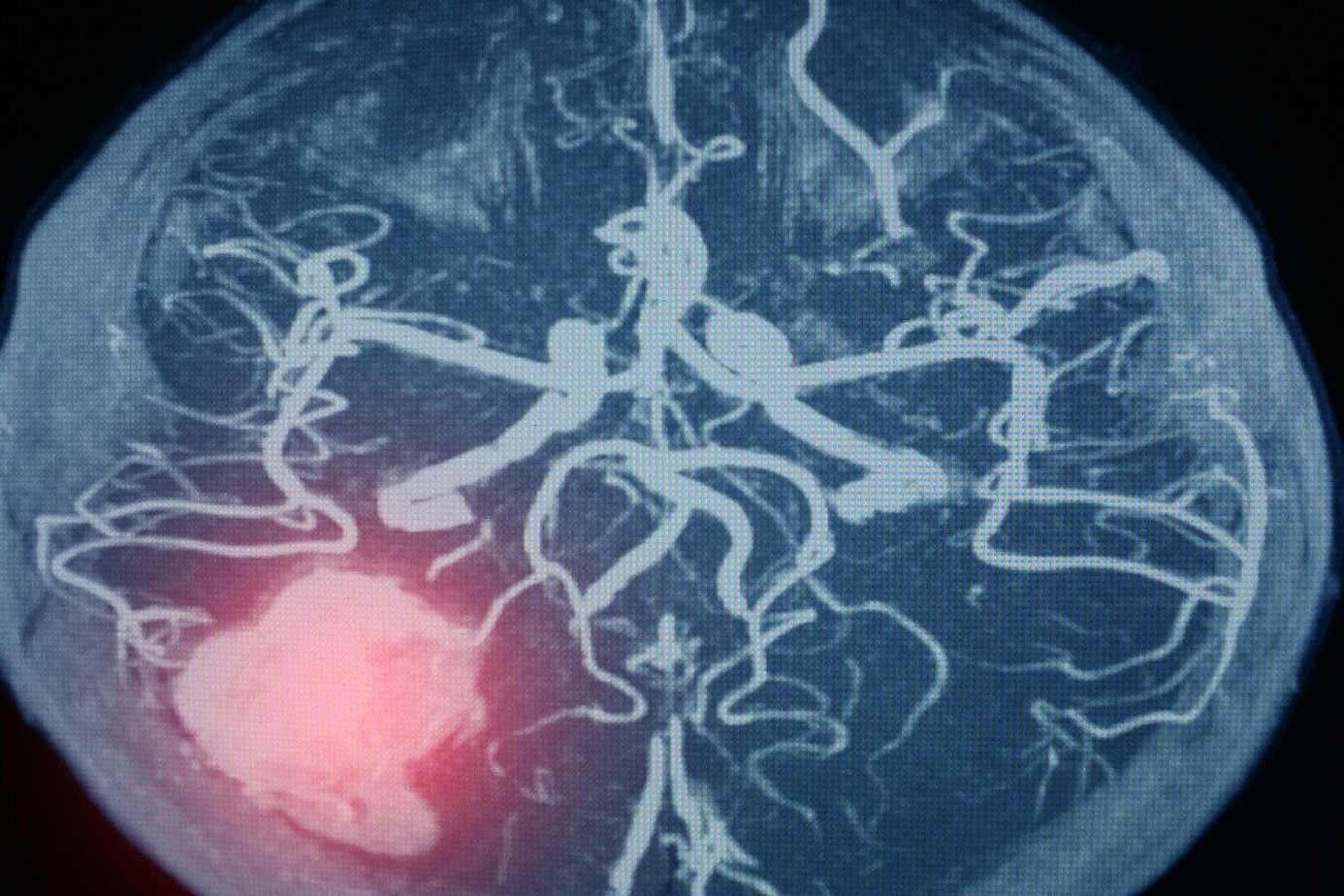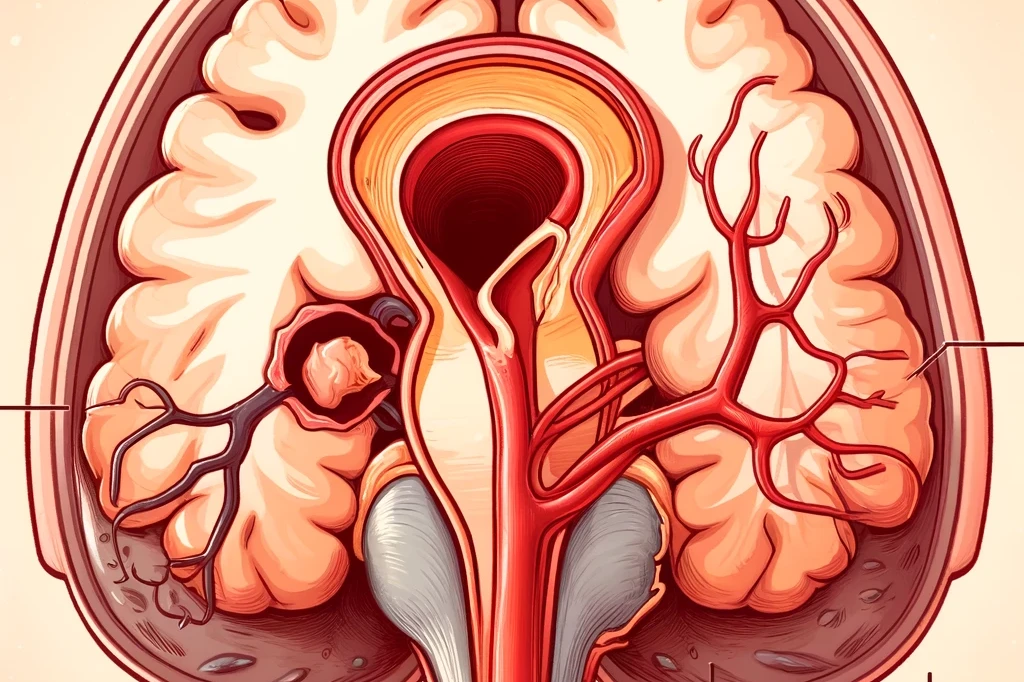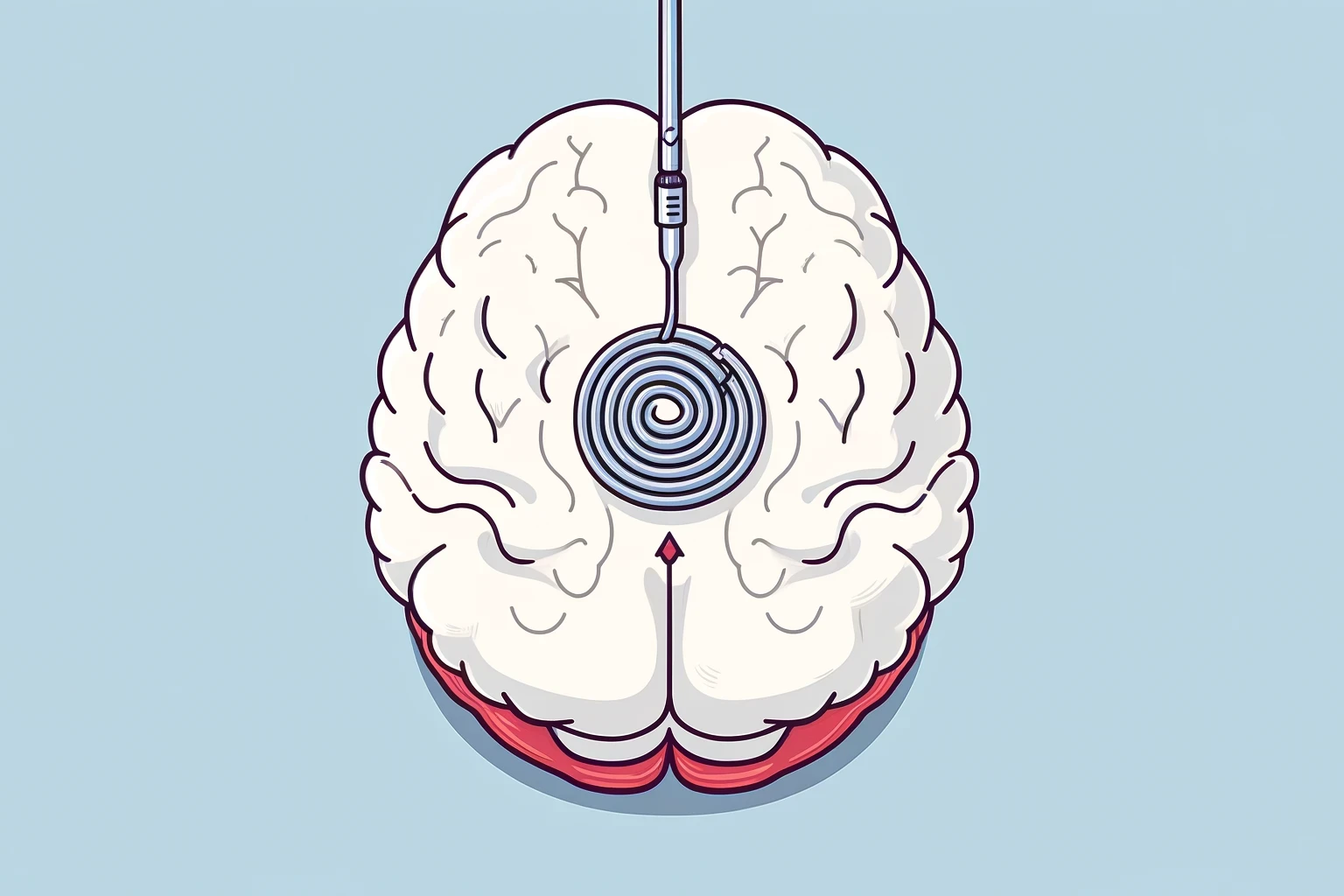A Tiny Balloon in the Brain: Aneurysm is like a small balloon on the blood vessels in your brain. These vessels are like roads for blood to travel to different parts of your brain.
Where They Form: Aneurysms can pop up anywhere in the brain, but they mostly like to hang out at the junctions where blood vessels split or bend. It’s like how a garden hose might bulge at a kink or a split.
Table of Contents
ToggleDifferent Types of Aneurysms
- Saccular Aneurysms: These are the most common type. They are round and bulge out on one side of a blood vessel, looking like a berry hanging on a stem.
- Fusiform Aneurysms: These bulge out all around the blood vessel, making it look expanded in all directions.
- Dissecting Aneurysms: These are caused by a tear in the blood vessel wall. Blood can leak through this tear and cause the vessel to bulge out.
Hidden Threat of Aneurysms
- Sizes Matter: Aneurysms come in various sizes. Small ones might not cause any issues, while larger ones can be more risky.
- Silent Threat: What’s tricky about aneurysms is that they often don’t cause any symptoms until they’re quite big or if they burst. It’s like having a sneaky bubble that doesn’t make a sound.
- The Brain’s Neighborhoods: The location of an aneurysm in the brain can affect different functions. For example, an aneurysm near the part of the brain that controls vision might affect how you see.
Why Should We Learn About Brain Aneurysms?
It’s super important to learn about brain aneurysms, even though they’re rare. Here’s why understanding them is a big deal.
- Knowledge is Power: By knowing what a brain aneurysm is, you can be smart about your health. If you know only then can you prepare.
- Early Detection: If we know what signs to look for, aneurysms can often be caught early. This means doctors can keep an eye on them or treat them before they cause serious issues.
- Understanding Symptoms: Sometimes, aneurysms give warning signs. If you or someone you know experiences symptoms like a sudden severe headache, it’s important to get it checked out quickly.
- Family History: In some families, aneurysms might be more common. If your family has a history of aneurysms, knowing about them can help you and your family members stay on top of your health.
- Health Choices: Learning about aneurysms can encourage us to make healthier life choices. Things like eating well, exercising, and not smoking can keep our blood vessels strong and reduce the risk of aneurysms.
How Does a Brain Aneurysm Happen?

Brain aneurysms can seem a bit mysterious, but there are several reasons why they might form. Let’s dive into some of the causes:
- Genetic Factors: Just like you might inherit your eye color or hair type from your parents, some people might inherit the tendency to develop aneurysms. Its like there is weak point in the blood vessels right from birth.
- High Blood Pressure: This is a big one. High blood pressure is like having a strong, fast river flowing through weak banks. Over time, this pressure can cause a part of the blood vessel wall to bulge out. It’s important to keep our blood pressure in check through healthy habits.
- Arterial Wall Damage: Our blood vessels can get damaged over time, especially if we’re not living healthily. Smoking, high cholesterol, and other factors can weaken the walls of our blood vessels, making them more prone to aneurysms.
- Aging: As we grow older, just like getting taller and wiser, the blood vessels in our brains can change too. They might weaken in some places as we age, increasing the risk of aneurysms.
- Head Injury: A strong hit to the head, like from a fall or a sports injury, can sometimes damage blood vessels in the brain. This damage might lead to an aneurysm.
- Lifestyle Choices: Smoking is a big no-no. It can seriously weaken blood vessel walls. Eating lots of unhealthy foods and not exercising can also contribute to the risk.
- Infections and Other Conditions: Rarely, infections or certain diseases can weaken blood vessels and lead to aneurysms.
What are the Signs of a Brain Aneurysm?
Spotting the signs of a brain aneurysm can be tricky because they often don’t show any symptoms until they’re quite large or if they burst. But there are some clues we can look out for Sudden,
- Severe Headache: This isn’t your typical headache. It’s often described as the worst headache ever experienced. It’s like a sudden thunderstorm in your head, starting out of nowhere.
- Vision Changes: You might experience blurred or double vision. It’s like trying to watch TV when the picture isn’t clear.
- Feeling Dizzy or Sick: You could feel very dizzy, almost like you’re on a merry-go-round that’s spinning too fast. Or, you might feel like you’re going to throw up, even if you haven’t eaten anything weird.
- Confusion: It might become hard to think straight or to remember simple things. Imagine trying to do your homework but suddenly forgetting how to do simple math or spell easy words.
- Sensitivity to Light: Bright lights might suddenly seem too glaring, kind of like when you first step out into the sun from a dark room.
- Stiff Neck: Your neck might feel stiff or sore, making it hard to move your head around like you normally would.
- Seizure: In rare cases, an aneurysm might cause a seizure, which is like an electrical storm in your brain that causes uncontrollable body movements.
- Drooping Eyelid: One of your eyelids might start to droop, making it seem like you’re winking but you’re not trying to.
- Nausea and Vomiting: You might feel sick to your stomach and even throw up, which isn’t fun.
What Happens if an Aneurysm Bursts?
When a brain aneurysm bursts, it’s a serious emergency that needs immediate medical attention.
- A Sudden Burst: Imagine a water balloon bursting unexpectedly. That’s similar to what happens when an aneurysm ruptures. It causes bleeding inside the brain, which is a very serious situation.
- Bleeding in the Brain: This bleeding can damage brain cells and cause swelling in the brain.This can lead to weakness in one part of the body and may cause unconsciousness.
- Symptoms of a Burst Aneurysm: The symptoms of a ruptured aneurysm are usually very sudden and severe. These can include
- A sudden and extremely painful headache – much worse than a normal headache.
- Stiff neck, almost like you can’t move your head properly.
- Sensitivity to light, where even normal light feels too bright.
- Double vision, or seeing two of everything.
- Seizures, which are like electrical storms in your brain that you can’t control.
- Losing consciousness – this means you might pass out and not wake up easily.
- Immediate Medical Help: If someone has a burst aneurysm, they need to go to the hospital right away. It’s like calling firefighters for a fire; you need help fast.
- The Golden Hours: Doctors often talk about the “golden hour” in medical emergencies. This means the first few hours after something like a burst aneurysm is super important. Getting help quickly can make a big difference in recovery.
- Treatment: At the hospital, doctors will work quickly to stop the bleeding and reduce the pressure in the brain. They might use surgery or other special procedures to fix the broken blood vessel.
- Recovery: Recovery from a burst aneurysm can take time and depends on how severe the bleeding was and how quickly treatment started. Some people might need rehabilitation to relearn basic skills like talking or walking.
How Can Doctors Find an Aneurysm? How are aneurysms diagnosed
Detecting a brain aneurysm can be like a detective solving a mystery. Doctors use different tools and tests to find out if there’s an aneurysm in the brain. Let’s look at some of these cool methods:
- CT Scan (Computed Tomography): This is like a super-advanced camera that takes detailed pictures of your brain. It uses special X-ray technology to create images from different angles, which are then put together to show if there’s an aneurysm.
- MRI (Magnetic Resonance Imaging): An MRI uses powerful magnets and radio waves to create pictures of your brain. It’s like a camera that can see inside your head without using X-rays. MRIs are great at looking at soft tissues and blood vessels.
- Cerebral Angiogram: This is a more detailed test. Doctors insert a thin tube into a blood vessel, usually in the leg, and guide it up to the brain. Then, they inject a special dye that shows up on X-rays. It’s like drawing a map of all the blood vessels in your brain so doctors can spot any aneurysms.
- Lumbar Puncture: If doctors think an aneurysm has burst, they might do this test. It involves taking a small amount of fluid from around your spine (don’t worry, they use anesthetic to make it not hurt). They check this fluid to see if there’s any blood in it, which can be a sign of a burst aneurysm.
- MRA (Magnetic Resonance Angiography): This is a special type of MRI that focuses specifically on blood vessels. It’s like having a zoomed-in view of the highways in your brain to check for traffic jams or bulges.
Treatment for Brain Aneurysms
Treating a brain aneurysm is a bit like fixing a weak spot in a dam before it can burst. Doctors have several ways to treat aneurysms, depending on their size, location, and whether they’ve burst. Let’s explore these fascinating treatments.
- Observation: Sometimes, if an aneurysm is small and not causing problems, doctors might just keep an eye on it. This is like watching a tiny crack in a vase to make sure it doesn’t get bigger. They’ll use regular check-ups and scans to watch the aneurysm closely.
Surgery
Clipping: This is a common Treatment Of A Ruptured Aneurysm. Surgeons open up the skull (this is called craniotomy) and place a tiny metal clip on the neck of the aneurysm. This clip stops blood from entering the aneurysm, like putting a clip on a balloon to stop it from inflating. This is falling out of favour because of the need for open surgery.
Endovascular Aneurysm Repair Coiling VS Clipping
- Coiling: This is less invasive than open surgery and preferred all over the world. Doctors thread a thin tube through the blood vessels to the aneurysm. They then push tiny coils through the tube into the aneurysm. These coils fill up the aneurysm, blocking blood flow into it and preventing it from bursting. It’s like filling the bubble with something that stops it from growing.
- Flow Diverters: These are like the coils but work differently. They are placed in the parent blood vessel to divert blood flow away from the aneurysm. Think of it as redirecting traffic away from a weak bridge. They help heal the vessel by redirecting blood flow and promoting tissue growth across the neck of the aneurysm.
- Medication: While medicines can’t fix an aneurysm, they can help with related issues. For example, doctors might give medicine to control blood pressure, reduce headaches, or prevent seizures.
- Lifestyle Changes: Along with medical treatments, doctors will often advise lifestyle changes to help prevent new aneurysms. This includes quitting smoking, eating a healthy diet, and exercising regularly.
How Can We Prevent Brain Aneurysms?
While we can’t control everything that might lead to a brain aneurysm, there are steps we can take to lower our risk. Let’s explore some ways to keep our brain healthy and reduce the chances of an aneurysm.
- Healthy Eating: Just like putting good fuel in a car, eating healthy foods keeps our blood vessels strong. Fruits, vegetables, whole grains, and lean proteins are all great choices. Try to avoid too much salt, fat, and sugar.
- Regular Exercise: Staying active is like giving your blood vessels a good workout. It helps keep your blood pressure in check and your blood vessels in top shape. Activities like biking, swimming, or even just a brisk walk can make a big difference.
- Control Blood Pressure: High blood pressure can put extra stress on blood vessel walls. Keeping blood pressure under control is like avoiding heavy loads on a weak bridge. If you have high blood pressure, follow your doctor’s advice and take any prescribed medication.
- Quit Smoking: Smoking is really bad for blood vessels. Quitting smoking can significantly reduce the risk of aneurysms.
- Limit Alcohol Consumption: Too much alcohol can weaken blood vessel walls and increase blood pressure. Moderation is key.
- Regular Check-Ups: If you have a family history of aneurysms or other risk factors, regular check-ups with your doctor can help catch any problems early.
- Manage Stress: High stress can also affect your blood pressure and overall health. Finding ways to relax and manage stress, like meditation, yoga, or just spending time doing things you enjoy, can be beneficial.
- Be Informed: Knowing the symptoms and risks of aneurysms can help you make better health choices.
FAQs
Hereditary and Genetic Factors
Are brain aneurysms hereditary?
There is a hereditary component to brain aneurysms, meaning that if a close family member has had one, your risk may be higher.
Are brain aneurysms genetic?
Certain genetic conditions can increase the risk of developing an aneurysm, but not all aneurysms are directly linked to genetic factors.
Prevalence and Risk
Are brain aneurysms fatal?
A ruptured brain aneurysm can be fatal, and prompt medical treatment is crucial.
Are brain aneurysms rare?
Brain aneurysms are not exceedingly rare; a significant number of adults may have small, unruptured aneurysms.
Are brain aneurysms common?
They are relatively common, but the majority do not rupture.
Can brain aneurysms happen to anyone?
Yes, they can occur in any individual, though certain factors may increase risk.
Who is at risk for brain aneurysm?
Risk factors include a family history of aneurysms, high blood pressure, smoking, and certain genetic conditions.
Symptoms and Detection
Are brain aneurysms painful?
Unruptured aneurysms often do not cause pain. A ruptured aneurysm can cause severe headache and other symptoms.
Where are most brain aneurysms located?
They commonly occur in the arteries at the base of the brain. Posterior communicating artery is commonest location.
Where is brain aneurysm pain located?
A sudden, severe headache (often described as the worst headache ever experienced) is a key symptom of a ruptured aneurysm.
Can brain aneurysms be detected?
Yes, through imaging tests like MRI or CT scans, especially if there are risk factors or symptoms.
Treatment and Management
Are brain aneurysms treatable?
Yes, there are several treatment options, including surgical clipping and endovascular coiling.
Can brain aneurysm be treated?
Treatment depends on the size, location, and risk of rupture.
Can brain aneurysms shrink?
Unruptured aneurysms typically do not shrink on their own.
Can you survive a brain aneurysm without surgery?
It depends on the aneurysm’s size, location, and risk of rupture.
Why coil a brain aneurysm?
Coiling is a less invasive procedure than surgical clipping and is used to prevent blood flow into the aneurysm.
Prevention and Lifestyle
Can brain aneurysms be prevented?
While not all can be prevented, risk factors like high blood pressure and smoking can be managed.
What should you not do if you have a brain aneurysm?
Avoiding activities that could significantly raise blood pressure, such as heavy lifting or straining, is generally advised.
Comparisons and Related Conditions
Is brain aneurysm a stroke?
A ruptured aneurysm can lead to a type of stroke called a hemorrhagic stroke.
Brain aneurysm vs stroke, vs migraine, vs hemorrhage, vs blood clot, vs tumor, vs seizure:
These are all different medical conditions with distinct causes and symptoms, though they may share some similarities.
Additional Aspects
Brain aneurysm and stroke recovery:
Recovery depends on the severity of the aneurysm and the stroke.
Brain aneurysm and covid vaccine (Pfizer):
There’s no established direct link between COVID-19 vaccines and an increased risk of brain aneurysms.
Brain aneurysm and alcohol:
Heavy alcohol use can increase blood pressure and potentially increase the risk of aneurysm rupture.
Brain aneurysm and dementia, pregnancy, cardiac arrest:
These are special conditions where managing an aneurysm may have different considerations.
Symptoms and Indicators
Brain aneurysm symptoms
Include severe headache, nausea, vision changes, and, if it ruptures, loss of consciousness.
Brain aneurysm coma
A severe rupture can lead to a coma.
Brain aneurysm uneven pupils:
This can be a sign of increased pressure in the brain due to a ruptured aneurysm.
Prognosis and Outcomes
Brain aneurysm surgery survival rate: Varies based on factors like the aneurysm’s size and location, and the patient’s overall health.
Do brain aneurysms kill you instantly?
Not always, but a rupture is a medical emergency requiring immediate attention.
About The Author

This article is medically reviewed by Dr. Chandril Chugh, Board-Certified Neurologist, providing expert insights and reliable health information.
Dr. Chandril Chugh is a U.S.-trained neurologist with over a decade of experience. Known for his compassionate care, he specializes in treating neurological conditions such as migraines, epilepsy, and Parkinson’s disease. Dr. Chugh is highly regarded for his patient-centered approach and dedication to providing personalized care.
→ Book a consultation to discover which remedies suit your needs best.





